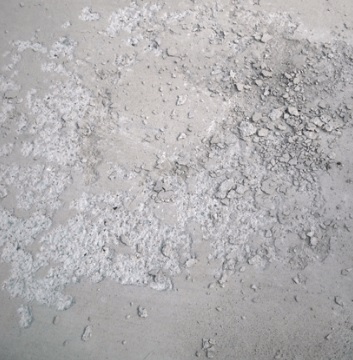Concrete spalling happens when pieces of the concrete break away from a weak or vulnerable concrete surface.
Prevent Concrete Spalling During the Concrete Pour
If your concrete hasn’t been poured yet there are certain things that can be done to prevent concrete from spalling. The first thing is to make sure that the concrete is being properly mixed, poured, and cured. Strong concrete is less vulnerable to factors that cause concrete to spall.
Why New Concrete Spalls and How to Fix It
There are a few main causes of concrete spalling:
- Weak concrete caused by a bad concrete mixture, bad pour, or improper curing.
- Freeze-thaw and road salt damage.
- Surface abrasion.
If you have new concrete that is starting to show signs of deterioration such as cracking or spalling, then there was most likely an issue with the concrete pour. If rebar wasn’t used, if expansion joints weren’t installed, or the mixture wasn’t correct, the concrete will start to deteriorate. Cracks are the most common sign of deterioration, but in severe cases, the surface will start to chip away (spall).
If this is the case, consider calling the concrete contractor that did the pour and work with them on a resolution. In many cases, the concrete will need to be re-surfaces or re-poured to stop the issue from continuing. The resolution will depend on the cause and severity.
Reducing or Stopping Concrete Spalling
Freeze-thaw and road salt damage are one of the most common causes of concrete spalling. During the Winter, water gets absorbed into the surface of the concrete where it freezes within the pores. When the concrete expands during the freezing process, it will cause the concrete to break away. Think of it this way. If you fill a glass of water up (the glass resembles a concrete pore) and put the glass in the freezer for 24 hours, when you go back to get the glass of water, you will no longer have a glass. What you will find is a solid chunk of ice and a shattered glass. The pressure build up from the expansion of the water will cause the glass to shatter, and that is exactly what it does to concrete.
There are two things that can be done to reduce damage to concrete. First, you can use a densifier to increase the strength of the concrete. Densifiers chemically react in the surface of the concrete where they form a calcium silicate hydrate (crystalline barrier) within the pores. This barrier is permanent and can only be removed if the concrete itself is removed. Densifiers help to increase the density of the concrete by filling up some of the pores space, therefore also increasing the strength of the concrete. Densifiers help to increase the strength of the concrete but they don’t help to reduce water absorption. This is why even the strongest concrete mixtures can still experience spalling over Winter. In order to stop the problem, you need to stop it at the source.
The second thing you can do is apply a water repellent sealer. Water repellent sealers are a great solution to concrete spalling because they cause water and other liquids to bead off the surface. They reduce the absorption of water by up to 95%, preventing water from being able to freeze within the pores. Silicate sealers can be used in combination with water repellent sealers if you feel you need an increase in strength and decrease in water absorbency. If applying both sealers you would apply a silicate densifier first followed by a silane siloxane water repellent sealer 5-7 days later.
Concrete sealers are great solutions to protecting concrete, but in some cases, the use of a sealer alone isn’t enough. Sealers are designed to reduce, but they can never stop water absorption on the surface which means that the exposed concrete is still at risk to the damaging effects of salt, snow, and ice. They will make a noticeable difference, but in severe cases a coating may need to be used. Learn more about acrylic sealers.

